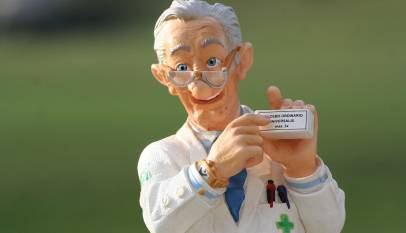
Skin picking, also known as excoriation disorder, is a challenging condition characterized by repetitive, compulsive skin-picking behaviors that can cause physical harm and emotional distress. Cognitive Behavioral Therapy for Skin Picking has emerged as a reliable and evidence-based treatment option aimed at breaking the cycle of these behaviors by targeting the thoughts and emotions that trigger them. CBT helps individuals identify and change negative thought patterns and behaviors, leading to healthier coping mechanisms and reduced skin-picking episodes.
This therapy focuses on increasing awareness of the urges and developing practical strategies to manage compulsions. By modifying how individuals respond to stress or emotional discomfort, CBT seeks to promote long-lasting improvements in behavior and overall mental health. Given its structured approach, it is widely recommended by mental health professionals for treating skin-picking disorder and related body-focused repetitive behaviors.
Understanding the mechanisms behind CBT’s effectiveness can provide hope and clarity for those struggling with excoriation disorder. Learning how this approach interrupts the cycle of compulsive behaviors helps explain why CBT is often considered the most effective psychotherapy available for this condition.
Understanding Cognitive Behavioral Therapy for Skin Picking
Skin picking disorder involves repetitive behaviors that cause physical harm and psychological distress. Cognitive Behavioral Therapy (CBT) targets the thought patterns and behaviors driving this condition. Techniques focus on awareness, emotional regulation, and behavior modification to reduce skin picking.
What Is Skin Picking Disorder?
Skin picking disorder, or excoriation disorder, is characterized by persistent picking at one’s own skin, leading to tissue damage and noticeable wounds. This behavior often occurs unconsciously and can cause significant emotional distress, including shame and anxiety.
It is classified as a body-focused repetitive behavior (BFRB) and is related to obsessive-compulsive disorder (OCD) in several cases. Comorbidity with mood and anxiety disorders is common. The disorder impairs daily functioning and can result in infections or scarring.
Principles of Cognitive Behavioral Therapy
CBT is a structured, time-limited psychotherapy focused on identifying and changing unhelpful thoughts and behaviors. It operates on the principle that changing cognitive distortions can influence emotions and actions.
In skin picking treatment, CBT helps individuals recognize triggers, understand the consequences of their actions, and develop healthier coping strategies. It also enhances self-monitoring and emotional regulation to manage urges effectively.
How CBT Addresses Skin Picking
CBT for skin picking breaks the cycle of automatic behavior by increasing awareness of picking triggers and emotional states. Patients learn to identify patterns, such as stress or boredom, that prompt the behavior.
The therapy uses cognitive restructuring to challenge beliefs that may maintain picking, like the need for perfection or relief from anxiety. Through gradual practice, patients replace picking with alternative, less harmful behaviors.
Continuous monitoring and feedback help reinforce progress and adjust strategies, promoting lasting behavior change.
Common Therapeutic Techniques
Key CBT techniques include habit reversal training (HRT), which involves recognizing picking urges and substituting them with competing actions. HRT often incorporates skills like muscle relaxation and awareness enhancement.
Exposure and response prevention (ERP) may be used to reduce anxiety related to skin sensations or appearance by gradually facing triggers without engaging in picking.
Other methods include stress management, cognitive restructuring, and acceptance-based strategies to improve emotional regulation. Therapy often combines these tools to fit individual needs.
Implementing CBT Strategies for Lasting Results
Effective cognitive behavioral therapy for skin picking involves structured steps to uncover underlying triggers, build practical coping mechanisms, and maintain progress over time. Key components focus on increasing awareness, skill development, and strategies to manage potential setbacks.
Identifying Triggers and Patterns
Identifying specific triggers and habitual patterns is essential. This involves tracking behaviors and feelings before, during, and after skin picking episodes. Common triggers include stress, boredom, anxiety, and environmental factors such as certain textures or visual cues.
Patients are encouraged to keep detailed logs or journals to recognize these triggers. This data helps both therapist and patient pinpoint the exact circumstances leading to the behavior, making interventions more targeted and effective.
Awareness of patterns often reveals automatic or unconscious actions. Recognizing these allows for timely intervention before picking begins, breaking the cycle of the disorder.
Developing Coping Skills
Once triggers are identified, therapy focuses on developing coping skills to replace skin picking behaviors. Techniques like habit reversal training (HRT) are widely used, teaching individuals to engage in competing responses when urges arise.
Mindfulness exercises help patients observe their sensations and urges without acting on them, increasing tolerance to discomfort. Cognitive restructuring challenges unhelpful thoughts that may perpetuate the behavior, such as feelings of shame or hopelessness.
Skills are personalized and practiced within therapy sessions and outside, ensuring patients build confidence in managing urges. This practical skill set is critical for reducing picking frequency and intensity over time.
Monitoring and Relapse Prevention
Regular monitoring is necessary to maintain progress and prevent relapse. Patients track their behavior continuously, noting improvements and any setbacks. This ongoing process provides data for modifying coping strategies if needed.
Relapse prevention plans often include identifying early warning signs such as increased anxiety or changes in routine. Therapists work with patients to create structured responses to these signals.
Group therapy or booster sessions can supplement individual therapy, offering social support and reinforcing skills. The goal is to empower patients to manage their condition independently over the long term.
British Virgin Islands Offshore Company Benefits and Setup Guide
The British Virgin Islands (BVI) is a leading jurisdiction for offshore company formation,…








